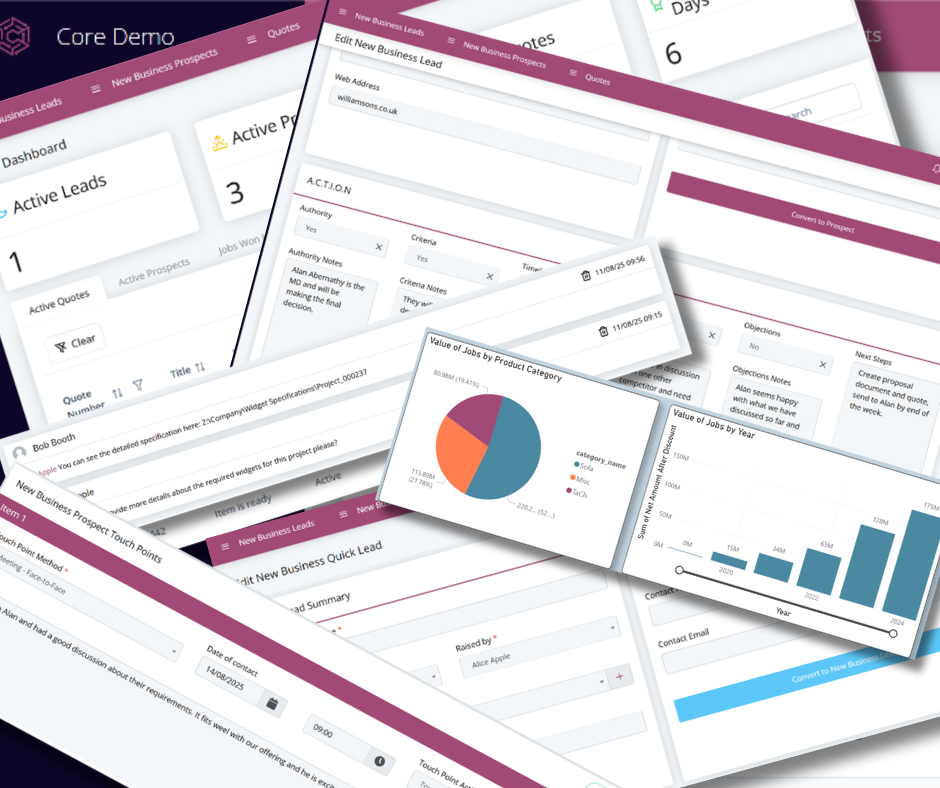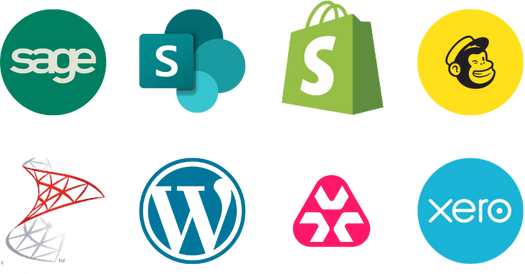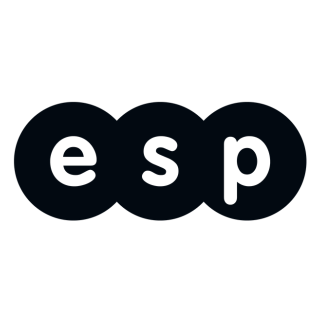Every business needs to find and win new customers. To really succeed in this area, it helps to think about this process as a journey. Starting with a potential lead, engaging with the decision makers, answering their questions, overcoming any doubts and hopefully taking it all the way through to closing the deal.
This journey is often referred to as a Sales Pipeline or Sales Funnel. The typical timeline varies greatly, anything from a few minutes to a year or more for some businesses. The details of the process can also take many different forms depending on the needs of your customers and how your sales team is organised.
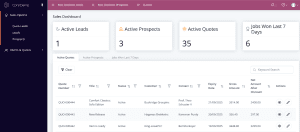
Giving structure to this process is vital for any business, but increasingly so as your business grows. Especially, if your potential customers need to interact with different members of your team as they move along the journey. Making sure the right information is captured at each stage and passed along as needed will really help maximise your chances of winning that potential customer.
An Example Sales Pipeline
For this example, we are going to structure our Sales Pipeline as a three-stage process:
-
Quick Lead
Quick Leads can come from any member of staff, not just the Sales Team. Someone spots a potential opportunity and makes a note of it to pass on to the Sales Team.
This might be a casual conversation, an interaction with an existing customer, or simply noticing that a new business has opened up in a certain location. Or it might be something more specific, such as signing up to a business directory or purchasing a mailing list.
At this stage, it’s all quite vague. There might be an opportunity we can investigate, but we only have minimal information.
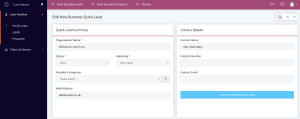
-
Lead
A Quick Lead becomes a Lead when we decide it is worth pursuing further. Typically, this means we have established the potential customer has a genuine need for one or more of our Products or Services.
At this stage, we reach out to them, try to establish a relationship and start fleshing out more detailed information. For this example, we are going to use the A.C.T.I.O.N framework to structure how we think about this part of the journey:
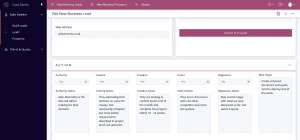
Authority: Who is making the decisions? Are we talking to right person?
Criteria: What factors are they basing their decision on (Price/Quality/Speed, Etc)?
Timeline: Do they have a specific target date or deadline?
Intent: What are they trying to achieve? Understanding the bigger picture helps us overcome possible objections.
Objections: Any specific objections or hesitations expressed.
Next Steps: Specific actions to be taken next and when. Helps prevent the lead going cold.
You can use the collaboration features in Core to help co-ordinate with your colleagues:

-
Prospect
A Lead becomes a Prospect when the potential customer is actively considering our proposal. The exact dividing line between a Lead and Prospect can be somewhat subjective, but it helps if we try to put definite criteria on the transition.
In our example, this means:
- We have followed the A.C.T.I.O.N framework
- We are talking to the right person
- They have confirmed a genuine interest
- We are in the same ballpark in terms of price/budget
All that’s left at this stage is to keep up the communication and hopefully close the deal with a happy customer.

Isn’t That a Lot of Effort?
You might be thinking that’s a lot of complication for a rather simple process. But remember this is just an example. For some businesses the Sales Pipeline will be simpler, but for others it will be even more complex, with more stages. With Core you can always adapt this example to suit your own needs.
What are the Benefits?
There are many benefits to having a structured Sales Pipeline process, these include:
- Makes it easier to train new staff, making your business more scalable
- Makes sure you don’t miss important steps and lose out on potential business
- Gives you measurable objectives you can track
- Enables you to try new things and better monitor what works and what doesn’t

Summary
If you would like to find out more about our CORE Software and how it could help you manage your Sales Pipeline and grow your business book a demo with us today.

